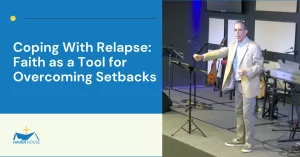
Table of Contents
OxyContin, the brand name for the opioid oxycodone, is used to relieve severe, ongoing pain. According to the U.S. Food and Drug Administration (FDA), even if you are prescribed the brand and take it as recommended, you can establish a dependency and danger of overdose and death. Here’s what to watch for if you suspect you or anyone you know is hooked on OxyContin.
Recognizing opioid oxycodone addiction’s indications, symptoms, and potential consequences can be a crucial starting point toward long-term recovery success.
What Is OxyContin?
Opioid oxycodone is an oxycodone controlled-release opiate brand. It works by altering how the mind and central nervous system perceive pain. This is an effective drug for patients in moderate to severe pain. Furthermore, it may assist folks in chronic agony in finding the respite they require to heal. OxyContin doses are prescribed every 12 hours and is available in:
-
10mg
-
15mg
-
20mg
-
30mg
-
40mg
-
60mg
-
80mg
-
160mg
It is accessible as a pill, but it may also be snorted, eaten, crushed, injected, and smoked. There is a substantially higher risk of abuse when people consume the pill in non-traditional ways, which is common in cases of misuse. Oxycodone, a key ingredient of Opioid oxycodone, is still one of the most widely misused medicines today, with dangerous adverse effects.
Previously, Opioid oxycodone marketing was restricted to the drug’s dangers and adverse effects. Furthermore, in select states designated as “high Opioid oxycodone prescription regions,” this medicine was prescribed 5 to 6 times higher than the national average. To complicate matters, oxycodone and opioid oxycodone have been connected to heroin and fentanyl misuse.
Due to the apparent addiction danger associated with both opioid oxycodone and oxycodone, a significant study has been conducted to learn how to avoid overdosing. Additionally, some recommend that doctors provide non-opioid alternatives to lessen dangers.
Statistics on OxyContin addiction
Five years after opioid oxycodone was introduced to the U.S., it was the nation’s most-sold brand of a prescription painkiller. In 2010, opioid oxycodone had sold more than $3 billion in annual sales and over 250 million opioid-based painkiller prescriptions were written each year.
The DEA has collected data that shows about five million Americans use opioid oxycodone each year for non-medical reasons. The U.S. National Institute on Drug Abuse (NIDA) has found that over two million Americans suffer from a substance abuse disorder due toopioid oxycodone and other opioid-based prescription drugs.
OxyContin deaths indicated that prescription painkiller overdoses caused by women dying from prescription painkiller overdose rose by 400% in the first decade of 21 century and 265% for men. The rate of OxyContin deaths from prescription painkiller overdose in the United States is approximately 10,000 for men and 6,500 for women each year. Nearly 500,000 Americans end up in emergency rooms every year due to problems with prescription painkillers misuse.
Oxycontin Addiction Causative and Risk Factors
Opioid oxycodone usage and addiction can be caused by a combination of genetic and environmental risk factors, including the following:
Genetics: A family history of drug misuse, addiction, and mental illness increases the probability that a person would develop a chemical dependency issue. If a person’s parents or siblings have a drug problem, they have a far higher chance of suffering similar issues. Chronic pain is a particular hereditary component of opioid oxycodone misuse that might increase the likelihood of eventually misusing or becoming addicted to this potent medicine.
Environmental: Growing up in a home where opioid oxycodone addiction was prevalent may incline an individual to engage in similar behavior. Trauma is also a significant environmental factor in developing a drug use problem. People mistreated, abandoned, attacked, or otherwise traumatized may be given opioid oxycodone for physical pain associated with the trauma or may turn to drug misuse in an ill-advised attempt to self-medicate the residual psychological suffering. Living in a drug-friendly town, working in a highly stressful sector, and socializing with others who use recreational drugs are all environmental variables that might raise a person’s risk of substance usage and addiction.
Factors of Risk:
-
Members of the family who have suffered from drug abuse, addiction, and mental illness
-
Prior drug addiction or mental disorders in the family
-
Abuse, neglect, violence, or other trauma in the past
-
Are you experiencing chronic or acute pain?
-
Gender
-
Prescription drugs are easily accessible.
-
Poverty
-
Peer influence
How Can You Tell If Someone Is Addicted to OxyContin?
In rare circumstances, opioid oxycodone might assist with chronic pain. Taking the proper amount can help with chronic pain. Despite its advantages, there are risks, and it is critical to recognize the indicators of opioid oxycodone use and misuse. Abuse is evident when someone uses opioid oxycodone above their prescription dosage.
Increased opioid oxycodone dose owing to drug tolerance is a clear symptom of abuse. Another indicator of excessive usage or misuse is the inability to quit taking opioid oxycodone. Another symptom of use is someone discussing the medication in a non-medical context. Finally, usage might be indicated by symptoms such as sadness, anxiety, headaches, tiredness, decreased work performance, and constricted pupils.
Detecting OxyContin Addiction
The addictive characteristics of opioid oxycodone grow gradually as individuals establish a tolerance before becoming addicted. This means that patients using opioid oxycodone for the intended reason will require more of the medicine to feel normal. Initially intended to treat severe back pain, the treatment is now used to improve one’s mood. The intended usage is now being used outside of its intended context. In the event of drug tolerance, the brain and nervous system acquire accustomed to the higher amount of chemicals, making it more challenging to reduce the amount taken.
As a byproduct of resistance, they may believe that the initial dosage is insufficient to cause symptoms, increasing their intake. When first given, they do not feel the effects as intensely.
OxyContin Side Effects and Doctor Shopping
Dependence on opioids can be identified by behaviours such as doctor shopping and obtaining false prescriptions. Patients may pretend to be ill to raise the dosage or redistribute drugs. Because of the drug’s grip on those who use it, seeking medical assistance for these symptoms is advised since quitting cold turkey might increase problems. Individuals not only have the necessary access to combat withdrawal symptoms, but they also undergo supervised care while detoxifying.
People who blend opioid oxycodone with other medications, such as alcohol or stimulants, put themselves in danger of overdosing. This is also an indication of an addiction. If you believe someone is addicted to OxyContin, you should see the following behaviours or adverse OxyContin side effects:
-
Opioid oxycodone doses have been increased.
-
Combining opioid oxycodone with other drugs
-
Opioid oxycodone crushing, snorting, and injection
-
Puking
-
Perspiring
-
Mood swings
-
Lightheadedness
-
Insomnia
-
Depression
-
Recreational use of it
-
Seizures or dizziness
-
Suicidal ideation
-
Appetite loss/weight loss
-
Muscle pain
-
Hallucinations
-
Developing a dependency or tolerance
Haven House Recovery Center Can Help With People Addicted to OxyContin
In treatment, you or your loved ones may recuperate in a secure setting with the supervision and assistance of certified experts. If you are looking for a Drug Rehab in Nashville, TN, Haven House Recovery is there for you. Our rehabilitation center can help men in Santa Rosa Beach, FL, who are in need of OxyContin addiction recovery and are looking for a licensed recovery center. We follow a 12-step recovery approach that teaches men how to cleanse and return to their healthy selves. Contact us now to start your journey!
Newsletter Signup
Discipleship Training
“The teaching of the wise is a Fountain of Life, turning a person from the snares of death.”
Proverbs 13:14 NIV


